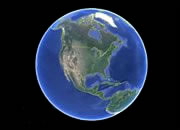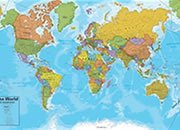Home » World Maps » Map of the Oceans
Map of the World's Oceans
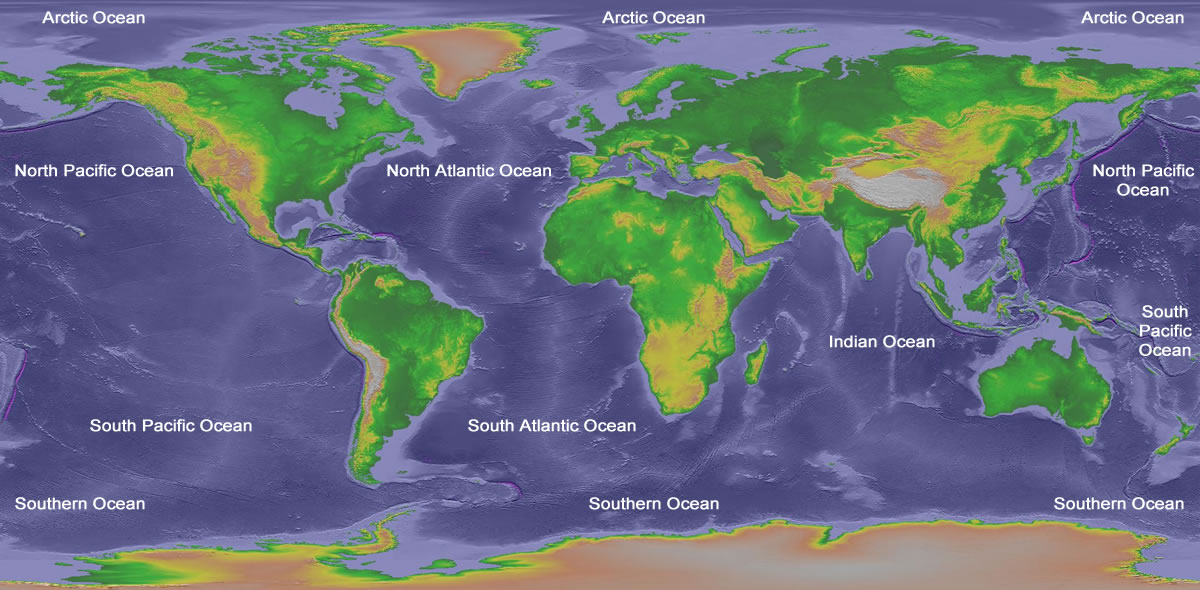
| Map of Earth's Five Oceans: Although there is only one global ocean, geographers have divided it into five major regions (which are also called "oceans"). They are: the Atlantic Ocean, the Pacific Ocean, the Indian Ocean, the Arctic Ocean and the Southern Ocean. These names facilitate communication. People who wish to be more specific can use names such as "the North Atlantic Ocean".
The map above is a bathymetric map, showing ocean depths in a gradient of violet colors. The shallowest areas, such as continental slopes, the Mid-Atlantic Ridge, and platform seas (such as the North Sea, located between The British Isles and Norway) are shown in a light violet color. The deepest areas are shown in a reddish violet color (such as the Japan Trench and the Mariana Trench). The base map is a global relief map plotted on a latitude / longitude grid by NOAA. |
ADVERTISEMENT
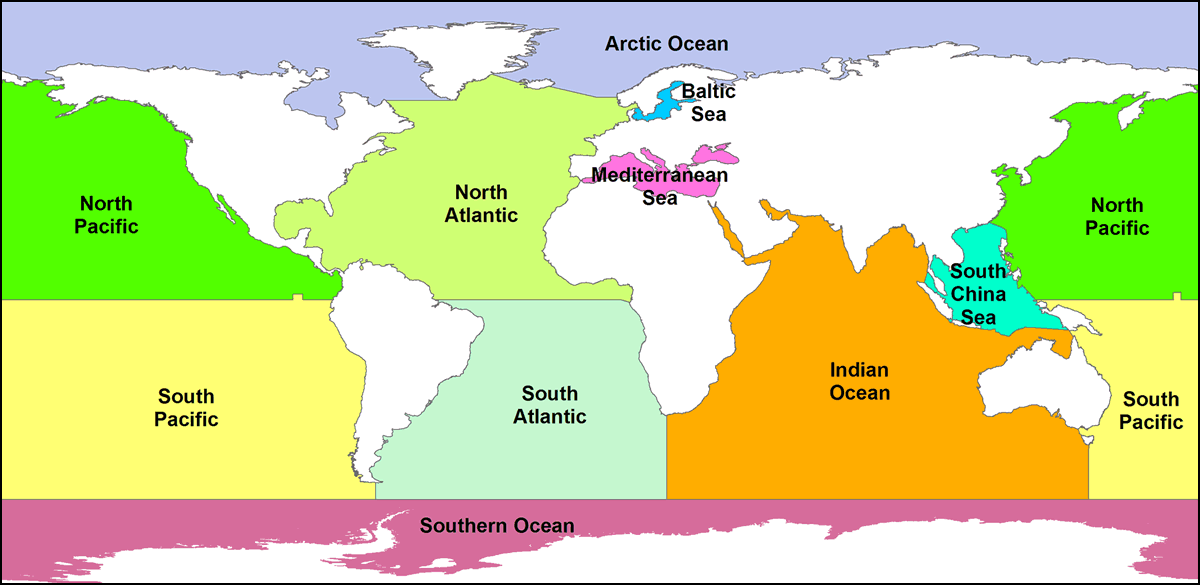
| NOAA created the world map above to show the boundaries of the five major oceans. They set the boundary between the North Atlantic and South Atlantic at the equator, the boundary between the North Pacific and South Pacific at the equator; and the northern boundary of the Southern Ocean at 60 degrees south latitude.
They used longitude lines extending north from 60 degrees south latitude to the southernmost points of South America, Africa, and Australia as the dividing lines between: the South Pacific and South Atlantic; the South Atlantic and the Indian Ocean; and the Indian Ocean and the South Pacific. The southern limit of the Arctic Ocean was set at three lines: 1) across the opening of the Bering Strait; 2) the 60-degree north latitude line across the Davis Strait between northern Labrador and southern Greenland; 3) a line across the Denmark Strait between Greenland and Iceland; and a line across the Norwegian Sea between Iceland and Norway. The base map is a latitude / longitude grid by NOAA. |
ADVERTISEMENT
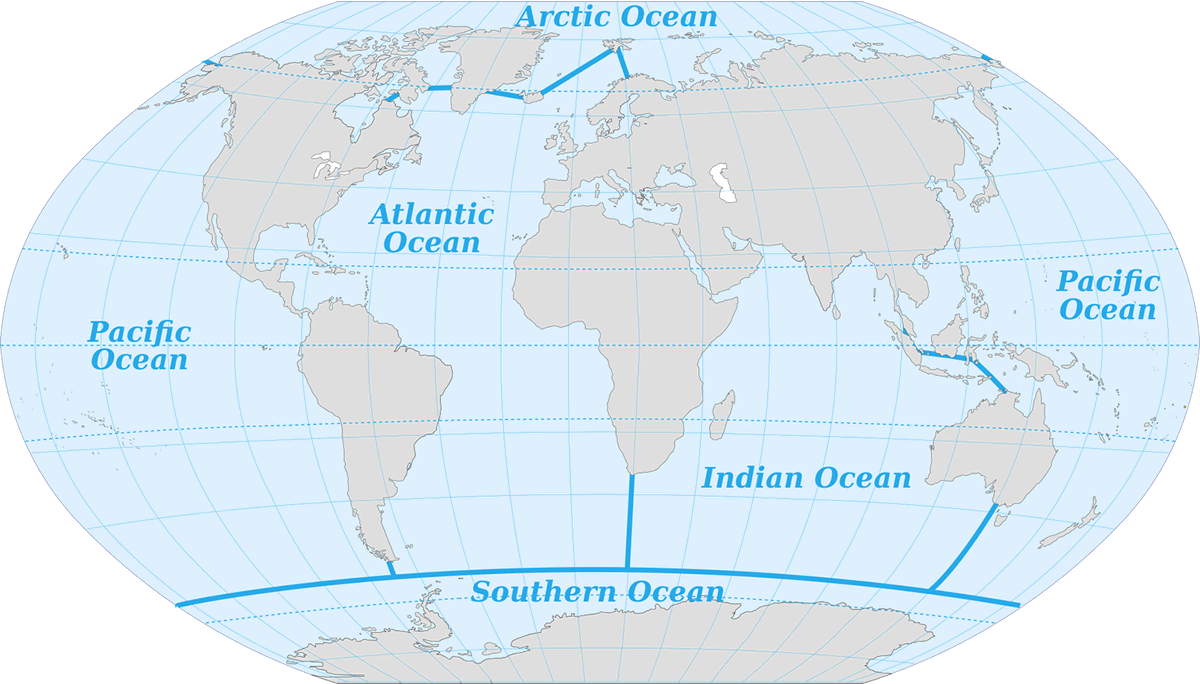
|
This map shows different boundaries of the world's oceans. It is drawn on a base map of the world with latitude and longitude reference lines.
The northern boundary of the Southern Ocean is shown at 60 degrees south latitude. The boundaries between the Atlantic and Pacific Oceans, and the Atlantic and Indian Oceans, and the Indian and Pacific Oceans are each shown as a longitude line between the southernmost point of a continent (South America, Africa, and Australia, respectively) and the northern boundary of the Southern Ocean. The Indian-Pacific boundary also has lines passing through the Indonesian archipelago. The Arctic Ocean's southern boundaries on this map differ from the map above prepared by NOAA. Its boundaries are defined by a line from Norway to Svalbard, Svalbard to Iceland, and Iceland to Greenland; another from Greenland to Baffin Island (Nunavut, Canada) and Baffin Island to Quebec (Canada); and a final line between Alaska and Russia. This map, used as the primary image in Wikipedia's Ocean article, shows that there is not a worldwide agreement on the boundaries between the world's oceans. Map by Pinpin and improved by Wikigraphists. Last accessed in March 2022. Image displayed here under a Creative Commons Attribution-ShareAlike license. |
ADVERTISEMENT
Explore the Oceans Using Google Earth:
Google Earth is a free program from Google that allows you to explore satellite images showing the world's oceans and continents in fantastic detail. It works on your desktop computer, tablet, or mobile phone. The images in many areas are detailed enough that you can see houses, vehicles and even people on a city street. Google Earth is free and easy-to-use.Earth's Oceans on a World Wall Map:
The Earth's Oceans and nearly 200 countries are illustrated on our Blue Ocean Laminated Map of the World. This map shows a combination of political and physical features. It includes country boundaries, major cities, major mountains in shaded relief, ocean depth in blue color gradient, along with many other features. This is a great map for students, schools, offices, and anywhere that a nice map of the world is needed for education, display, or decor.ADVERTISEMENT

